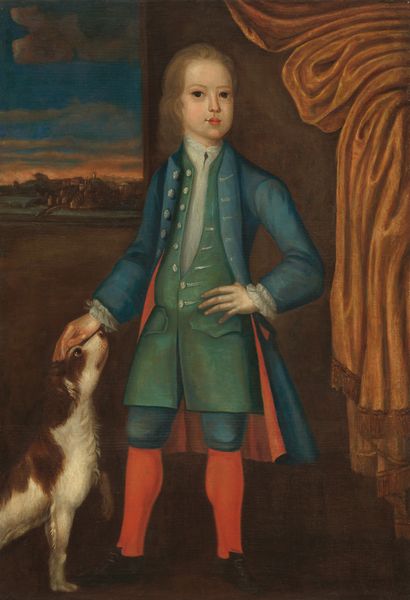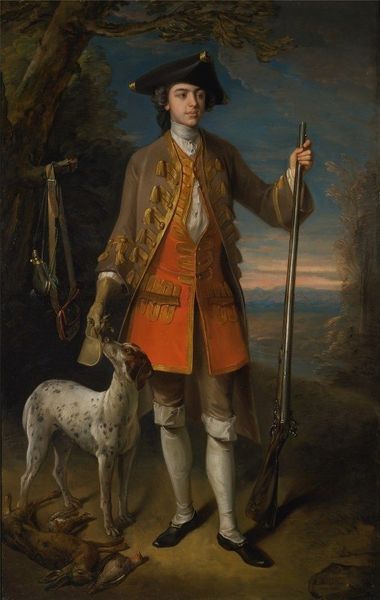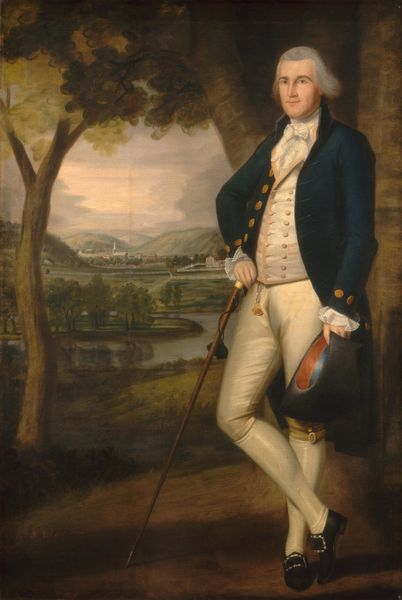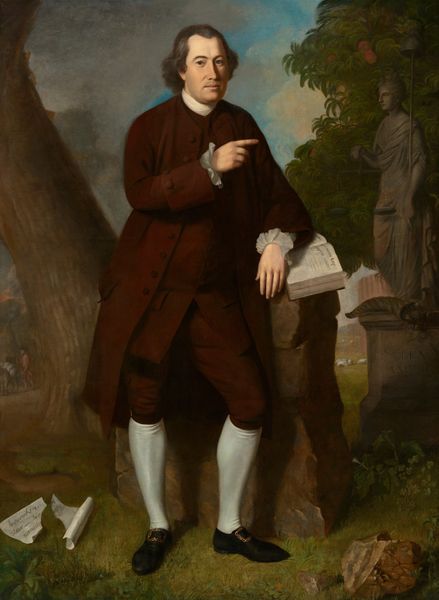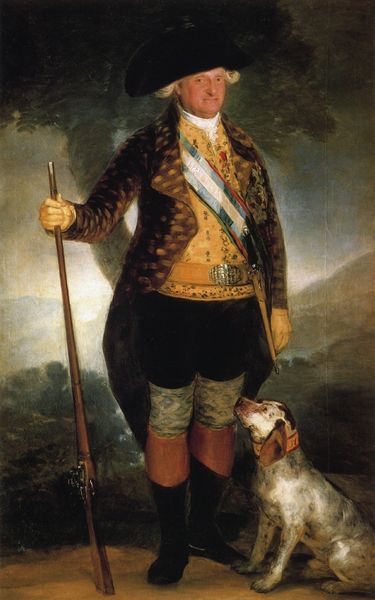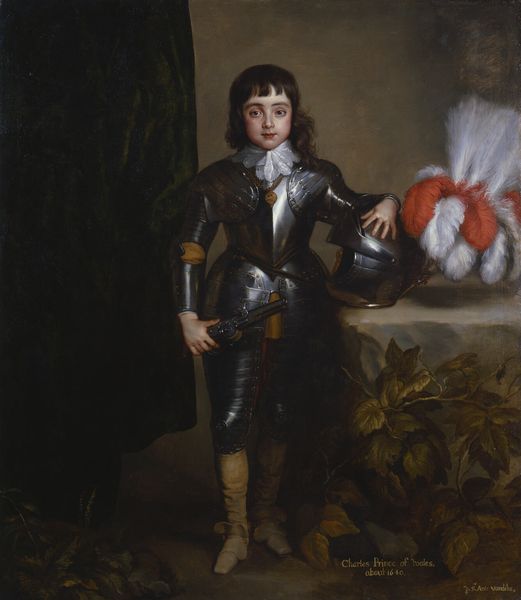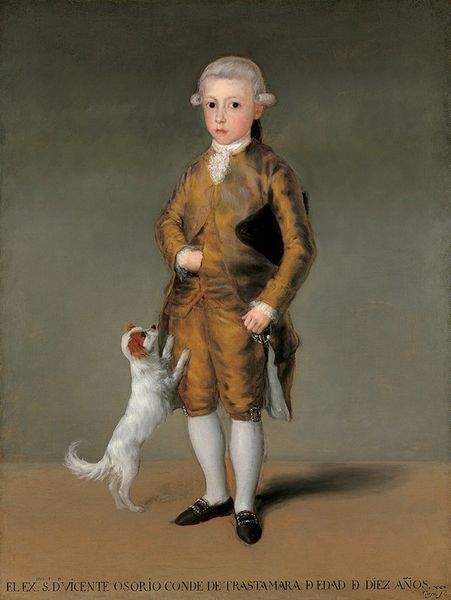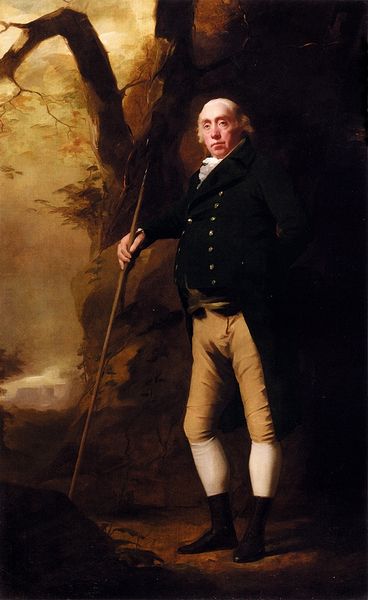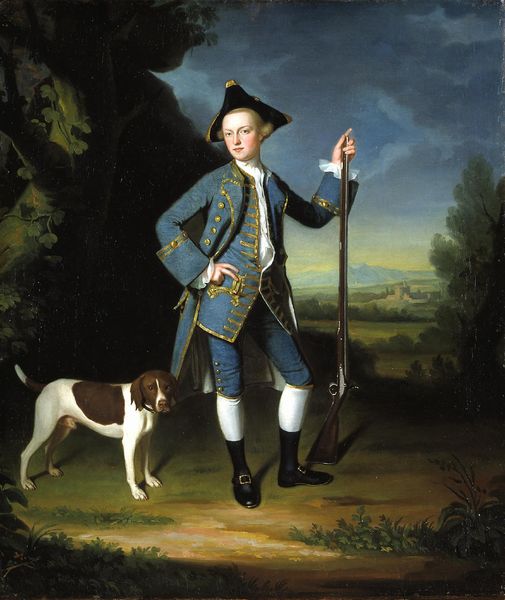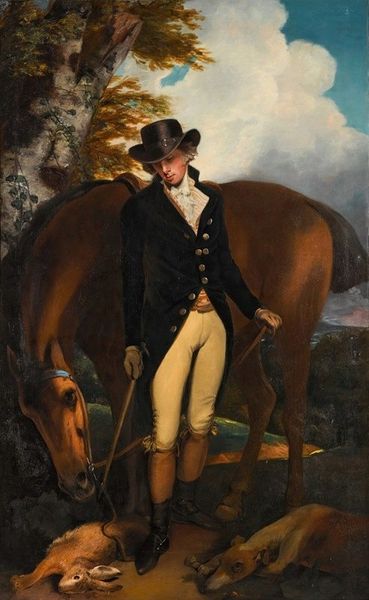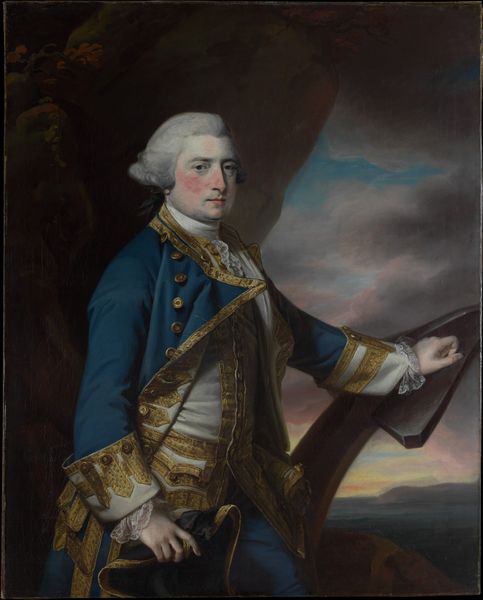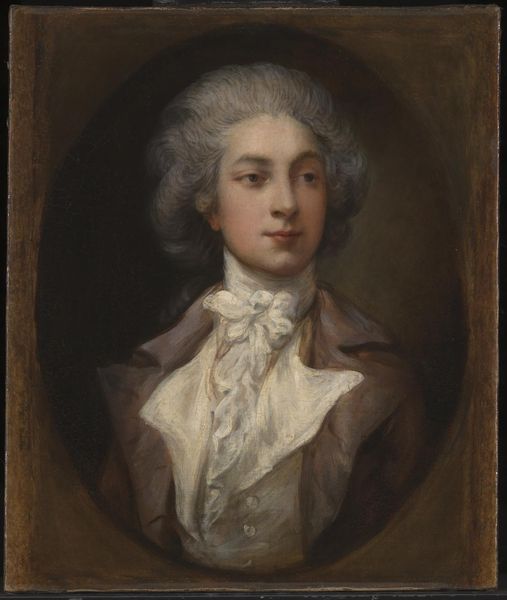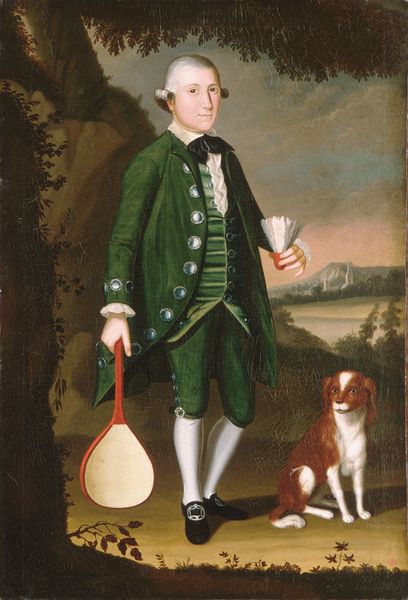
#
portrait
#
character portrait
#
portrait reference
#
animal portrait
#
men
#
animal drawing portrait
#
portrait drawing
#
facial portrait
#
portrait art
#
portrait character photography
#
fine art portrait
#
celebrity portrait
Dimensions: 96 x 60 1/4 in. (243.8 x 153 cm)
Copyright: Public Domain
Editor: Here we have Enoch Seeman the Younger’s portrait of Sir James Dashwood, created in 1737. The meticulous rendering of the fabrics—velvet, silk, linen—strikes me first. It’s a celebration of luxurious textures, wouldn't you agree? What do you see in the way the artist has chosen to portray him? Curator: The sumptuous fabrics absolutely command attention. But I look beyond the immediate opulence and see the mechanics of display at play here. Think about the textile industry of the 18th century—the global trade networks, the exploitative labor involved in producing these fine materials. Dashwood isn’t just wearing clothes; he’s wearing the product of a complex, often brutal, system of production and consumption. What do you notice about his posture and setting? Editor: His stance exudes confidence, even arrogance. He’s in a natural setting, but the groomed landscape and the grand house in the distance suggest carefully controlled wealth. Curator: Precisely! It's about control, extraction, and land ownership. The clothing acts almost as a uniform, signaling membership in a class that benefits from these systems. The dog at his side is another mark of the gentleman's ability to command and cultivate from nature, a working partner that enjoys leisure by their master's feet. Have you considered how portraits like this helped cement social hierarchies? Editor: So the painting isn’t just about Sir James’ individual likeness, but also about reinforcing his position within the broader economic and social structure of the time? Curator: Exactly. It's a material document reflecting—and perpetuating—a specific power dynamic. This painting showcases that Dashwood is not merely a man, but part of a machine. Editor: This makes me think about what wasn't rendered in paint here -- the laborers behind it all. Thanks to this perspective, I'll now be questioning these artworks' original purpose more critically. Curator: Indeed. Art provides an arena for deeper insight, challenging us to look beyond the surface, uncovering these layers of materiality, power, and exploitation behind these classical displays.
Comments
No comments
Be the first to comment and join the conversation on the ultimate creative platform.
